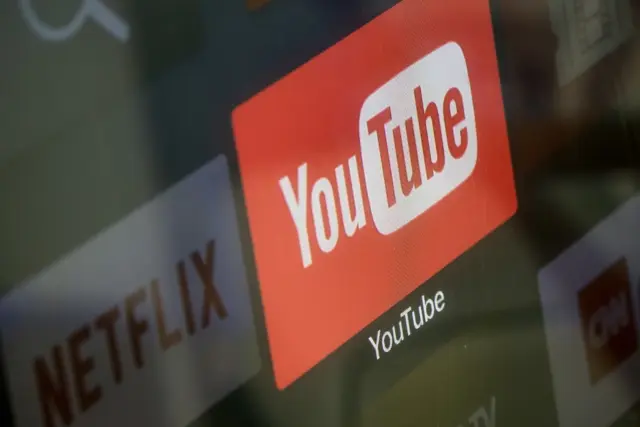
Are those pre-roll, mid-roll, and banner ads on YouTube starting to feel relentless? You’re not alone. It appears YouTube is strategically implementing new features and subtly shifting the viewing experience to nudge more users toward its Premium subscription. While the company hasn’t explicitly stated an increase in ad frequency for free users, recent changes strongly suggest a concerted effort to highlight the benefits of a paid membership.
For years, YouTube has been the go-to platform for video content, offering a vast library of entertainment, education, and information – mostly for free, supported by advertising. However, the balance seems to be shifting. Many users have noticed a significant uptick in the number and length of ads interrupting their viewing. This isn’t just anecdotal; online forums and social media are buzzing with complaints about the increasingly ad-laden experience on free YouTube.
What’s Actually New? It’s More Than Just More Ads
While the perceived increase in ads is a major pain point for free users, YouTube is also actively rolling out features exclusively for Premium subscribers, further incentivizing the switch. Let’s look at some of these recent developments:
- Enhanced Video Discovery for Premium Users: Just recently, YouTube introduced an experimental feature that provides Premium subscribers with a recommended queue of videos directly within their current watch queue. This means after a Premium user finishes watching a video they selected, they’ll see a set of personalized recommendations appear right there, eliminating the need to go back to the homepage. This feature, currently available for Android users until April 7, 2025, aims to keep viewers engaged longer and makes content discovery more seamless for paying members. Imagine finishing a captivating documentary and immediately having a curated list of similar videos ready to play – that’s the experience YouTube is offering its Premium users.
- Higher Quality Audio: For music enthusiasts, YouTube Premium now offers higher-quality 256kbps audio for music videos. This enhancement provides a richer and more immersive listening experience with improved clarity and depth – a noticeable upgrade for those who use YouTube as their primary music streaming service. Free users, on the other hand, continue to listen at standard quality.
- Faster Playback Speeds on Mobile: Premium subscribers now have access to more precise playback speed controls on their mobile devices, allowing them to fine-tune the speed up to 4x. This can be particularly useful for viewers who want to quickly digest information or review content at their own pace. Free users have a more limited range of playback speed options.
- “Jump Ahead” Feature on the Web: Previously available only on mobile, the “Jump Ahead” feature has now been extended to the web for Premium users. This clever tool allows viewers to skip directly to the parts of a video that most other users have fast-forwarded to, saving time and getting straight to the engaging content.
- Picture-in-Picture and Smart Downloads for Shorts on iOS: For iPhone users, YouTube Premium now offers picture-in-picture functionality for Shorts, allowing them to watch short-form videos while using other apps. Additionally, a smart downloads feature automatically downloads recommended Shorts for offline viewing – a convenient perk for users with limited data or those who want to watch content on the go without an internet connection.
Why the Push for Premium?
The reasons behind YouTube’s strategy are multifaceted. Firstly, running a platform with billions of users and petabytes of video content is incredibly expensive. Advertising revenue is crucial, but with increasing competition in the streaming space and the rising costs of content acquisition and infrastructure, YouTube is likely looking to its Premium subscription as a more stable and predictable revenue stream.
Secondly, YouTube Premium offers a genuinely enhanced viewing experience. Ad-free viewing is the most obvious benefit, but features like background play (allowing videos to continue playing even when the screen is off or another app is open), offline downloads, and access to YouTube Music Premium provide significant value to users who consume a lot of video content.
Finally, by offering exclusive features and subtly increasing the friction for free users through more frequent ads, YouTube is employing a common strategy used by many subscription-based services. The goal is to make the paid option so appealing that users find the cost justifiable to eliminate interruptions and gain access to extra perks.
What Does This Mean for You?
If you’re a frequent YouTube user who is increasingly frustrated by ads, you have a few choices:
- Embrace the Ads: Continue using the free version and accept the increasing number of advertisements as the price for access to YouTube’s vast library.
- Consider YouTube Premium: Evaluate the benefits of a Premium subscription, such as ad-free viewing, background play, offline downloads, and exclusive features. If you watch a significant amount of YouTube content, the monthly fee might be worth it for the improved experience. YouTube currently offers individual plans at $13.99 per month, with family and student plans also available at different price points.
- Explore Alternatives: While YouTube’s dominance in online video is undeniable, there are other platforms available. Depending on your specific needs and preferences, services like Vimeo, Dailymotion, or even newer platforms might offer a less ad-intensive experience, although their content libraries may not be as extensive.
- Use Ad Blockers (with Caution): While ad blockers can effectively remove ads, using them goes against YouTube’s terms of service and can impact the revenue creators rely on. YouTube has also been actively working to detect and circumvent ad blockers, so this might not be a long-term solution.
The Future of YouTube Viewing
It seems clear that YouTube is committed to growing its Premium subscriber base. While free access to the platform is likely to remain, users should probably expect to see more features and a smoother experience reserved for paying members. The increase in ad frequency for free users, coupled with the introduction of appealing Premium-only features, suggests a deliberate strategy to make the paid subscription a more attractive option for a wider audience.
Ultimately, the decision of whether or not to subscribe to YouTube Premium comes down to individual viewing habits and tolerance for ads. However, the recent changes indicate that the line between the free and paid experience is becoming increasingly distinct, and users who want an uninterrupted and feature-rich YouTube experience may find that a Premium subscription is becoming less of a luxury and more of a necessity.



![Will Your Next Doctor Be Your iPhone? Apple’s Bold AI Health Push with iOS 19 Apple's Bold AI Health Push with iOS 19]](https://www.pc-tablet.co.in/wp-content/uploads/2025/03/Apples-Bold-AI-Health-Push-with-iOS-19-238x178.webp)





![Will Your Next Doctor Be Your iPhone? Apple’s Bold AI Health Push with iOS 19 Apple's Bold AI Health Push with iOS 19]](https://www.pc-tablet.co.in/wp-content/uploads/2025/03/Apples-Bold-AI-Health-Push-with-iOS-19-100x75.webp)








